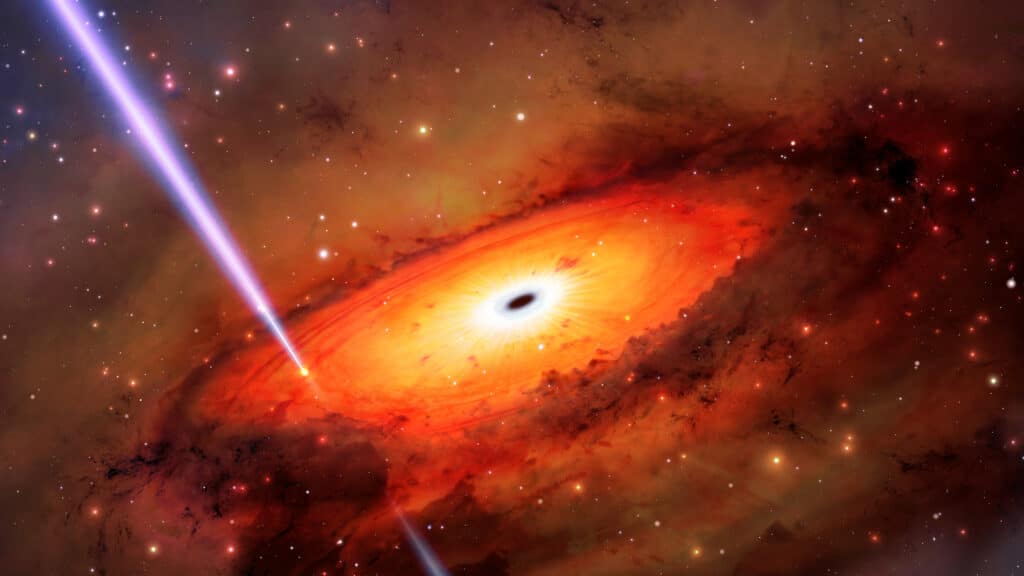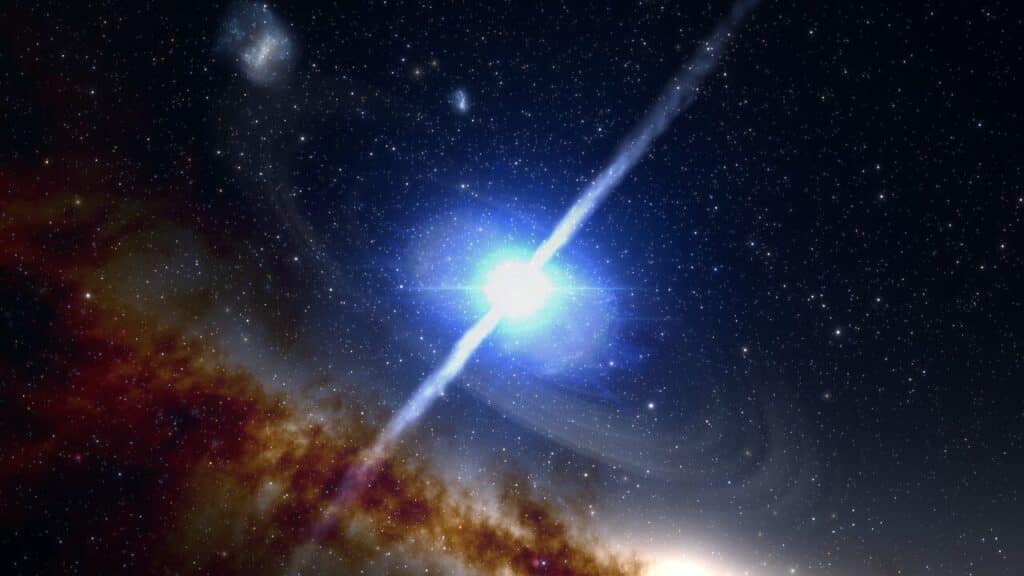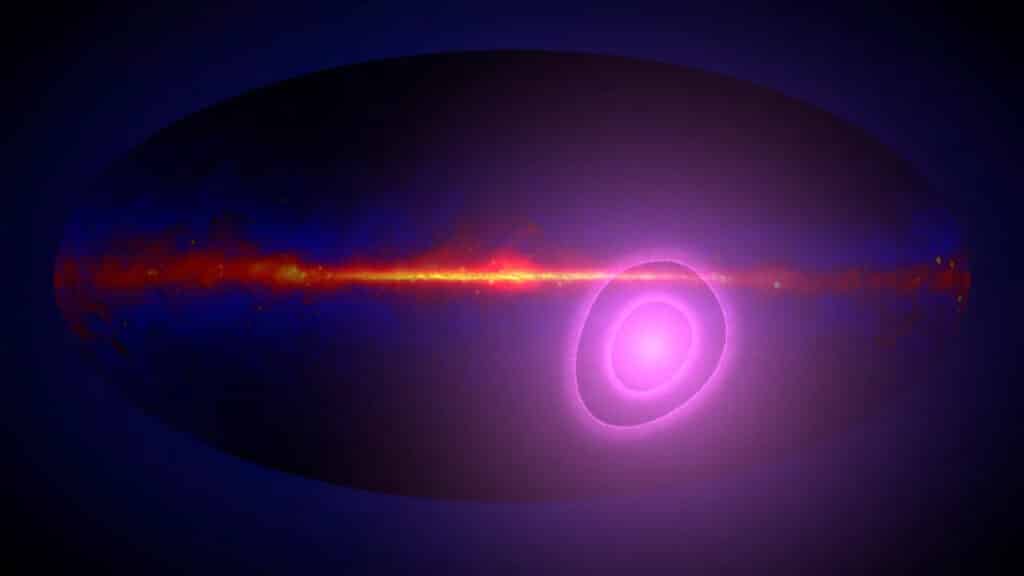Astronomers have made an unexpected and mysterious discovery while analyzing data from NASA’s Fermi Gamma-ray Space Telescope. Over a decade of observations have revealed a peculiar gamma-ray feature outside of our galaxy, raising new questions about the cosmos.
“It is a completely serendipitous discovery,” says Alexander Kashlinsky, a cosmologist at the University of Maryland and NASA’s Goddard Space Flight Center, in a media release. “We found a much stronger signal, and in a different part of the sky, than the one we were looking for.”

The cosmic microwave background (CMB), the oldest light in the universe, originated about 13 billion years ago when the universe cooled enough to form atoms, releasing a burst of light that permeated the cosmos. Astronomers had previously observed that the CMB exhibits a dipole structure, meaning it’s slightly hotter and denser toward the constellation Leo and colder and less dense in the opposite direction. This pattern has been attributed to the motion of our solar system relative to the CMB.
In their quest to further understand these cosmic phenomena, the team utilized Fermi’s Large Area Telescope (LAT), which scans the entire sky multiple times a day. They combined 13 years of LAT observations, focusing on gamma rays, which are immensely more energetic than visible light. After removing all known sources and the central plane of the Milky Way, the researchers analyzed the extragalactic gamma-ray background.
To their surprise, they found a gamma-ray dipole, but it was located in the southern sky, far from the CMB’s, and its magnitude was ten times greater than expected.
“While it is not what we were looking for, we suspect it may be related to a similar feature reported for the highest-energy cosmic rays,” notes study co-author Chris Shrader, an astrophysicist at the Catholic University of America in Washington and at Goddard.
This discovery becomes even more fascinating when linked to another cosmic mystery: ultrahigh-energy cosmic rays (UHECRs). These are the most energetic particles ever detected, carrying over a billion times the energy of 3 GeV gamma rays. Since 2017, the Pierre Auger Observatory in Argentina has reported a dipole in UHECRs’ arrival direction, peaking in a sky location similar to the newly discovered gamma-ray feature.
Both the gamma-ray and UHECR dipoles show about 7 percent more rays or particles than average coming from one direction and fewer from the opposite. Scientists suspect that unidentified sources are producing both the gamma rays and the ultrahigh-energy particles, suggesting a potential link between these two phenomena.

This revelation has opened a new chapter in astrophysics. To solve this cosmic conundrum, astronomers must either locate these mysterious sources or propose alternative explanations for both features. The discovery challenges our current understanding of the universe and hints at physical processes beyond our current grasp.
The Fermi Gamma-ray Space Telescope, a partnership between astrophysics and particle physics managed by Goddard, continues to push the boundaries of our cosmic knowledge. Developed in collaboration with the U.S. Department of Energy and international partners, Fermi’s latest findings highlight the importance of ongoing research in unraveling the mysteries of the universe.
The study is published in The Astrophysical Journal Letters.












